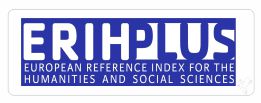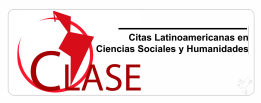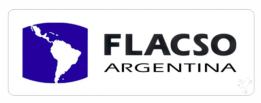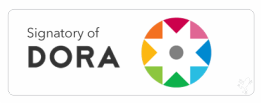The relevance of leisure marketing activities among university level students
DOI:
https://doi.org/10.34069/RA/2021.8.04Palabras clave:
ocio, marketing recreativo, entretenimiento, preferencias, actividad.Resumen
The leisure sector represents the fastest and among one of the largest growing economic sectors of consumer spending. However, our understanding and knowledge of consumer psychology of recreation and leisure are yet limited to the social and economic significance of the under-research phenomenon. Therefore this study investigated the relevance of recreational marketing activities in leisure consumers in terms of their preferences. Through an online survey 300 responses were collected from the respondents till closing date. Confirmatory Factor Analysis were conducted with help of AMOS 24 software. Significant differences were found in terms of importance, and place, between male and female students. Moreover, higher mean observed for male students than females in terms of these sub-dimensions social, access, and place. This study offer many practical and managerial applications to marketers and policy makers by identifying the important dimension of leisure activities.
Descargas
Citas
Adam, I., Hiamey, S. E., & Afenyo, E. A. (2015). Leisure constraints in the university setting in Ghana. Annals of Leisure Research, 18(1), 145-158.
Agle, B. R., & Caldwell, C. B. (1999). Understanding research on values in business: A level of analysis framework. Business & Society, 38(3), 326-387.
Argan, M., & Pazarlamasi, E. (2007). Entertainment Marketing. Ankara: Detay Publishing, 25-80.
Chirazi, M. (2019). Comparative evolution of the phenomenon of geography of sports on national and global levels. Geosport for Society, 10(1), 7-14.
Cho, H. (2020). Importance of leisure nostalgia on life satisfaction and leisure participation. The Service Industries Journal, 40(1-2), 90-109.
Christopher, M., Payne, A., & Ballantyne, D. (2013). Relationship marketing: Taylor & Francis.
Ciochetto, L. (2015). The Impact of New Technologies on Leisure in Developed and Emerging Economies. RIMCIS: Revista Internacional y Multidisciplinar en Ciencias Sociales, 4(2), 194-214.
Desbordes, M., Aymar, P., & Hautbois, C. (2019). The Global Sport Economy: Contemporary Issues: Routledge.
Dibb, S., & Simkin, L. (1993). Strategy and tactics: marketing leisure facilities. Service Industries Journal, 13(3), 110-124.
Fairley, S. (2003). In search of relived social experience: Group-based nostalgia sport tourism. Journal of Sport Management, 17(3), 284-304.
Frey, D., & Pimentel, R. (1978). Principal component analysis and factor analysis.
Furlong, A., & Cartmel, F. (1997). Young people and social change: Individualization and risk in late modernity: Open university press.
Godbey, G. (2017). The future of leisure, tourism, and sport: navigating change: Sagamore Publishing.
Göksel, A. G., & Serarslan, M. Z. (2015). Public relations in sports clubs: New media as a strategic corporate communication instrument. Corporate communication, 2(2), 275-283.
Granter, E. (2008). A dream of ease: Situating the future of work and leisure. Futures, 40(9), 803-811.
Hackley, C., & Tiwsakul, R. (2006). Entertainment marketing and experiential consumption. Journal of marketing communications, 12(1), 63-75.
Hair, J. F., Ringle, C. M., & Sarstedt, M. (2011). PLS-SEM: Indeed a silver bullet. Journal of Marketing theory Practice 19(2), 139-152.
Hawes, D. K. (1977). Time budgets and consumer leisure-time behavior. ACR North American Advances.
Henderson, K. (1984). Vollinteerism as Leisure. Journal of Voluntary Action Research, 13(1), 55-63.
Hoffman, K., & Bateson, J. E. (2006). Services Marketing: Concepts, Strategies, & Cases, Mason. OH: Thomson.
Horner, S., & Swarbrooke, J. (2005). Leisure Marketing A Global Perspective. Butterworth.
Horner, S., & Swarbrooke, J. (2012). Leisure marketing: Routledge.
Iso-Ahola, S. E. (1979). Basic dimensions of definitions of leisure. Journal of Leisure Research, 11(1), 28-39.
Joliffe, I., & Morgan, B. (1992). Principal component analysis and exploratory factor analysis. Statistical methods in medical research, 1(1), 69-95.
Juniu, S. (2009). The transformation of leisure. Leisure/Loisir, 33(2), 463-478.
Keinan, A., & Kivetz, R. (2011). Productivity orientation and the consumption of collectable experiences. Journal of Consumer Research, 37(6), 935-950.
Kelly, J. R. (1972). Work and leisure: A simplified paradigm. Journal of Leisure Research, 4(1), 50-62.
Kelly, J. R. (2009). Work and leisure: A simplified paradigm. Journal of Leisure Research, 41(3), 439-451.
Larson, L., Whiting, J. W., Green, G. T., & Bowker, J. (2014). Physical activity levels and preferences of ethnically diverse visitors to Georgia state parks. Journal of Leisure Research, 46(5), 540-562.
Larson, L. R., Szczytko, R., Bowers, E. P., Stephens, L. E., Stevenson, K. T., & Floyd, M. F. (2019). Outdoor time, screen time, and connection to nature: Troubling trends among rural youth? Environment and Behavior, 51(8), 966-991.
Lehto, X. Y., Park, O., Fu, X., & Lee, G. (2014). Student life stress and leisure participation. Annals of Leisure Research, 17(2), 200-217.
Lou, C., & Yuan, S. (2019). Influencer marketing: how message value and credibility affect consumer trust of branded content on social media. Journal of Interactive Advertising, 19(1), 58-73.
Malkoc, S. A., & Tonietto, G. N. (2019). Activity versus outcome maximization in time management. Current opinion in psychology, 26, 49-53.
McLean, D. D., & Hurd, A. R. (2015). Recreation and leisure in modern society.
Moe, W. W. (2003). Buying, searching, or browsing: Differentiating between online shoppers using in-store navigational clickstream. Journal of consumer psychology, 13(1-2), 29-39.
Mok, C., Sparks, B., & Kadampully, J. (2013). Service quality management in hospitality, tourism, and leisure: Routledge.
Motamedi, M., Caldwell, L. L., Weybright, E. H., Jones, D., Wegner, L., & Smith, E. A. (2020). Doing a leisure activity because there is nothing else to do: Related outcomes and intervention effects for adolescents. Journal of Leisure Research, 51(1), 1-15.
Novatorov, E. (2015). The administered public recreation marketing concept. Available at SSRN 2656506.
O'Mahony, M., Hurley, N., Kushmerick, N., & Silvestre, G. (2004). Collaborative recommendation: A robustness analysis. ACM Transactions on Internet Technology (TOIT), 4(4), 344-377.
Oguz, D., Cakci, I., Sevimli, G., & Ozgur, S. (2010). Outdoor environment preferences in nursing homes: Case study of Ankara, Turkey. Scientific Research and Essays, 5(24), 3987-3993.
Pope, N., & Turco, D. (2001). Sport & event marketing: McGraw-Hill.
Przepiorka, A. M., & Blachnio, A. P. (2017). The relationships between personality traits and leisure time activities: development of the leisure time activity questionnaire (LTAQ). Neuropsychiatry, 7(6), 1035-1046.
Purrington, A., & Hickerson, B. (2013). Leisure as a cross-cultural concept. World Leisure Journal, 55(2), 125-137.
Ratten, V. (2019). Sport entrepreneurship and public policy: future trends and research developments. Journal of entrepreneurship and public policy.
Raykov, T. (1997). Scale reliability, Cronbach's coefficient alpha, and violations of essential tau-equivalence with fixed congeneric components. Multivariate behavioral research, 32(4), 329-353.
Routledge, C., Arndt, J., Wildschut, T., Sedikides, C., Hart, C. M., Juhl, J., . . . Schlotz, W. (2011). The past makes the present meaningful: Nostalgia as an existential resource. Journal of personality and social psychology, 101(3), 638.
Schipperijn, J., Cerin, E., Adams, M. A., Reis, R., Smith, G., Cain, K., . . . Frank, L. D. (2017). Access to parks and physical activity: An eight country comparison. Urban forestry & urban greening, 27, 253-263.
Sharaievska, I. (2017). Updating the family operating system: A literature review of information communication technology and family leisure. Leisure sciences, 39(5), 400-414.
Shaw, S. M. (1984). The measurement of leisure: A quality of life issue. Loisir et société/Society and Leisure, 7(1), 91-107.
Shaw, S. M. (1985). The meaning of leisure in everyday life. Leisure sciences, 7(1), 1-24.
Siu, R. C. (2018). Institutional Change and the Evolution of the World Leisure Industries. Journal of Economic Issues, 52(2), 378-386.
Slabbert, E., Fourie, J., & Saayman, M. (2011). The leisure and sport participation patterns of high school learners in Potchefstroom. South African Journal for Research in Sport, Physical Education and Recreation, 33(1), 65-80.
Stebbins, R. A. (2005). Choice and experiential definitions of leisure. Leisure sciences, 27(4), 349-352.
Su, L., & Hsu, M. K. (2013). Service fairness, consumption emotions, satisfaction, and behavioral intentions: The experience of Chinese heritage tourists. Journal of Travel & Tourism Marketing, 30(8), 786-805.
Tabachnick, B. G., & Fidell, L. S. (2001). Using multivariate statistics. Allyn and Bacon. Needham Heights, MA.
Tobias, S., & Carlson, J. E. (1969). Brief report: Bartlett's test of sphericity and chance findings in factor analysis. Multivariate behavioral research, 4(3), 375-377.
Walls, C., & Breidenbach, R. (2005). Spring in action: Dreamtech Press.
Wang, J., & Lv, B. (2019). Big data analysis and research on consumption demand of sports fitness leisure activities. Cluster Computing, 22(2), 3573-3582.
Weybright, E. H., Son, J. S., & Caldwell, L. L. (2019). “To have healthy leisure is to have balance”: Young adults’ conceptualization of healthy and unhealthy leisure. Journal of Leisure Research, 50(3), 239-259.
Whiting, J. W., Larson, L. R., Green, G. T., & Kralowec, C. (2017). Outdoor recreation motivation and site preferences across diverse racial/ethnic groups: A case study of Georgia state parks. Journal of Outdoor Recreation and Tourism, 18, 10-21.
Yeung, M. C., Ramasamy, B., Chen, J., & Paliwoda, S. (2013). Customer satisfaction and consumer expenditure in selected European countries. International Journal of Research in Marketing, 30(4), 406-416.
Zhang, X., Zhou, X., Lin, M., & Sun, J. (2018). Shufflenet: An extremely efficient convolutional neural network for mobile devices. Paper presented at the Proceedings of the IEEE conference on computer vision and pattern recognition.


























